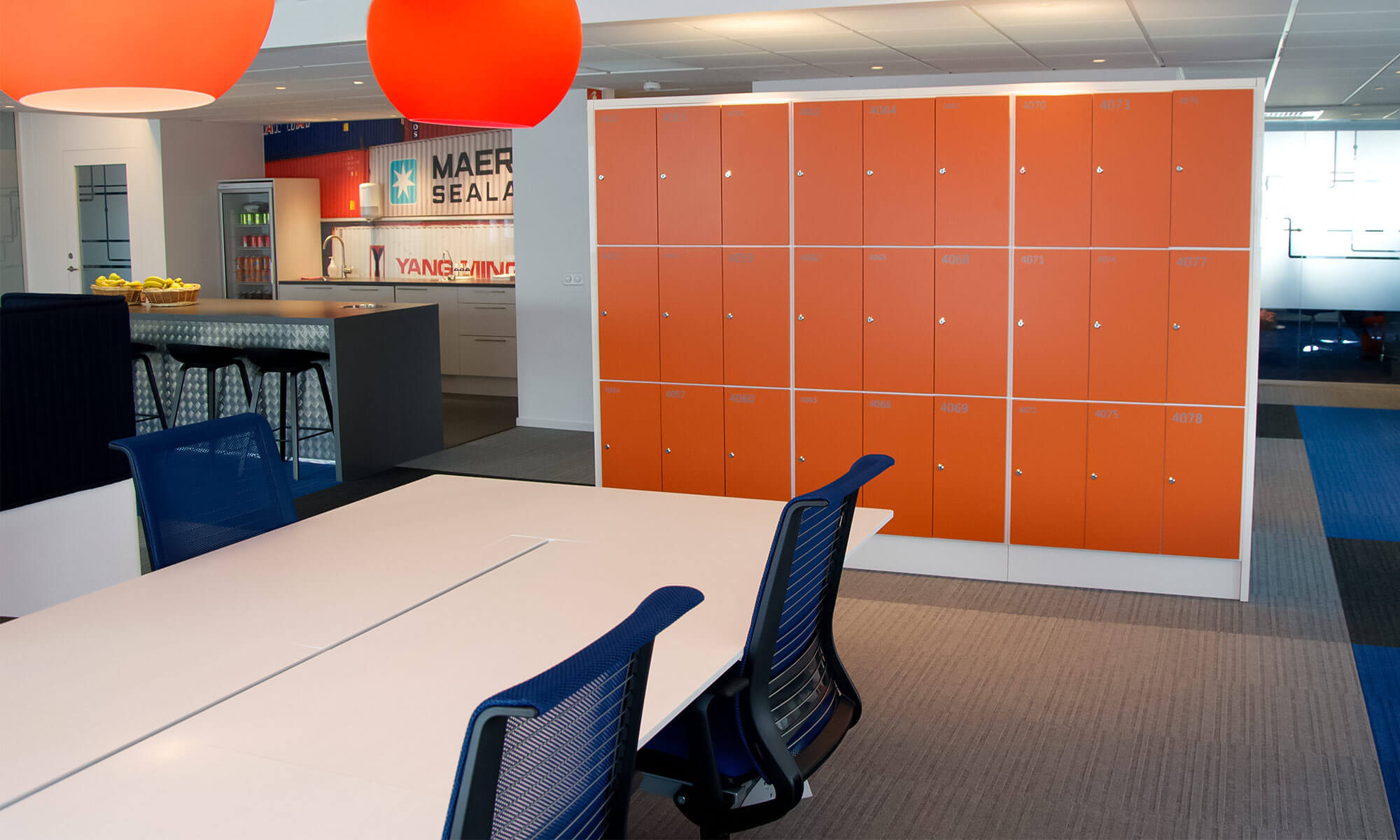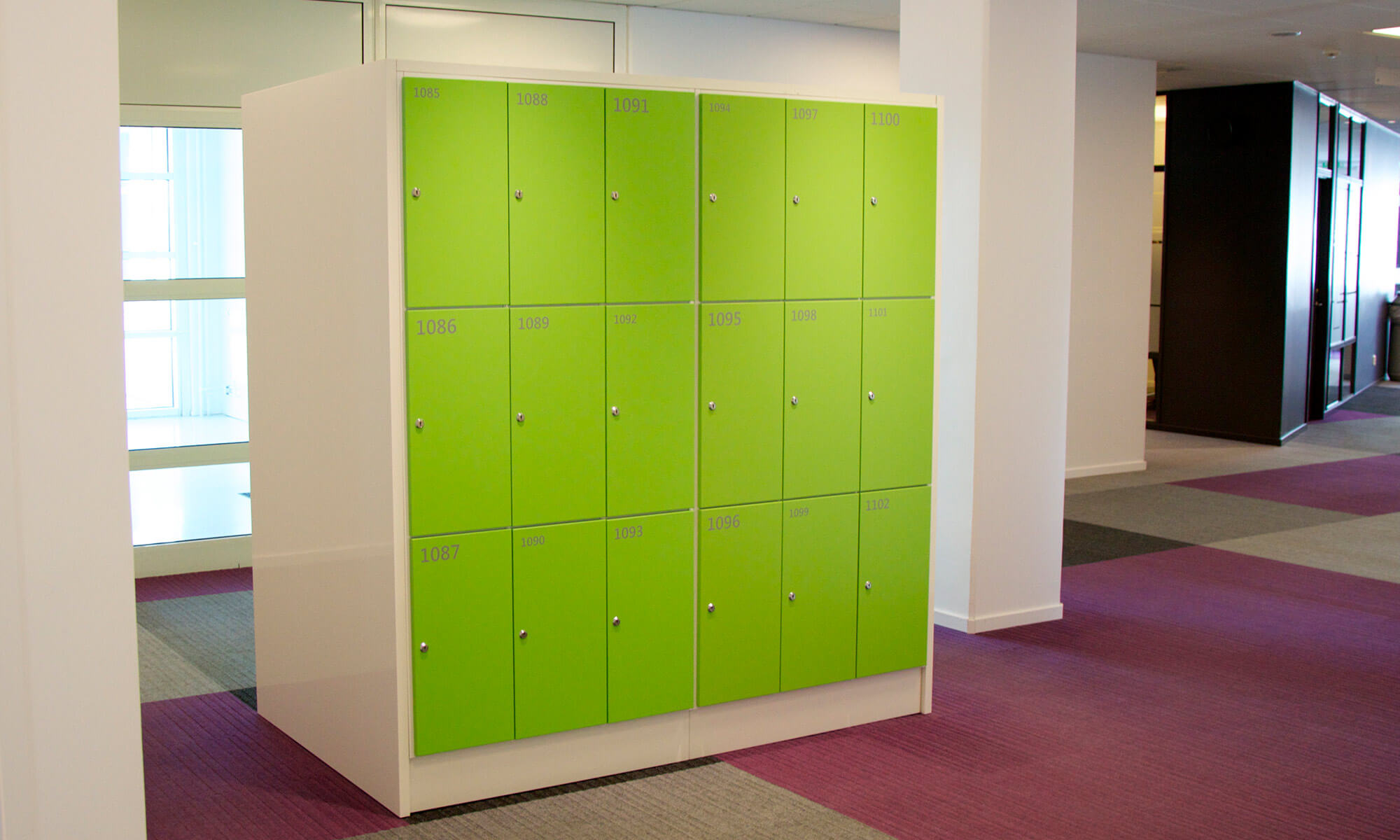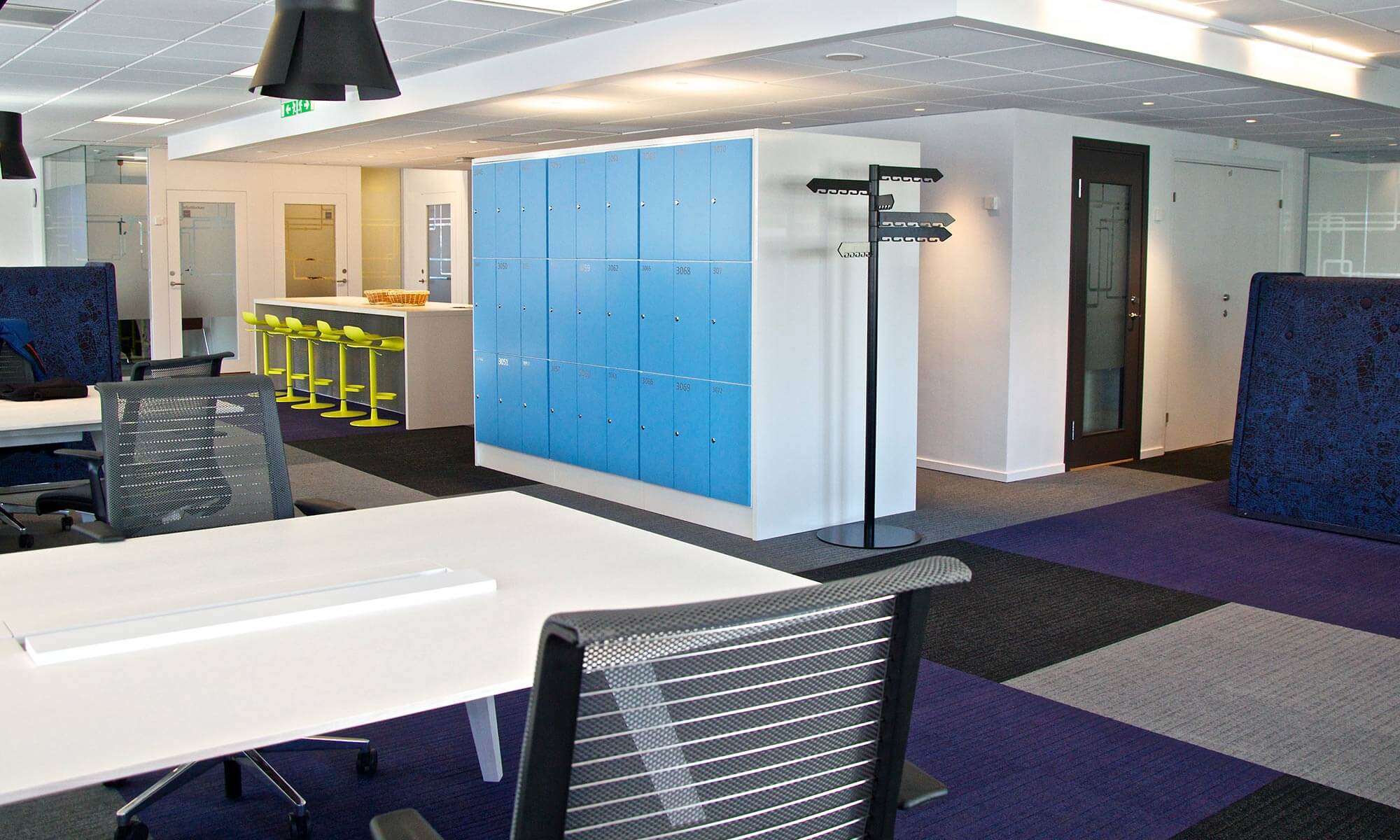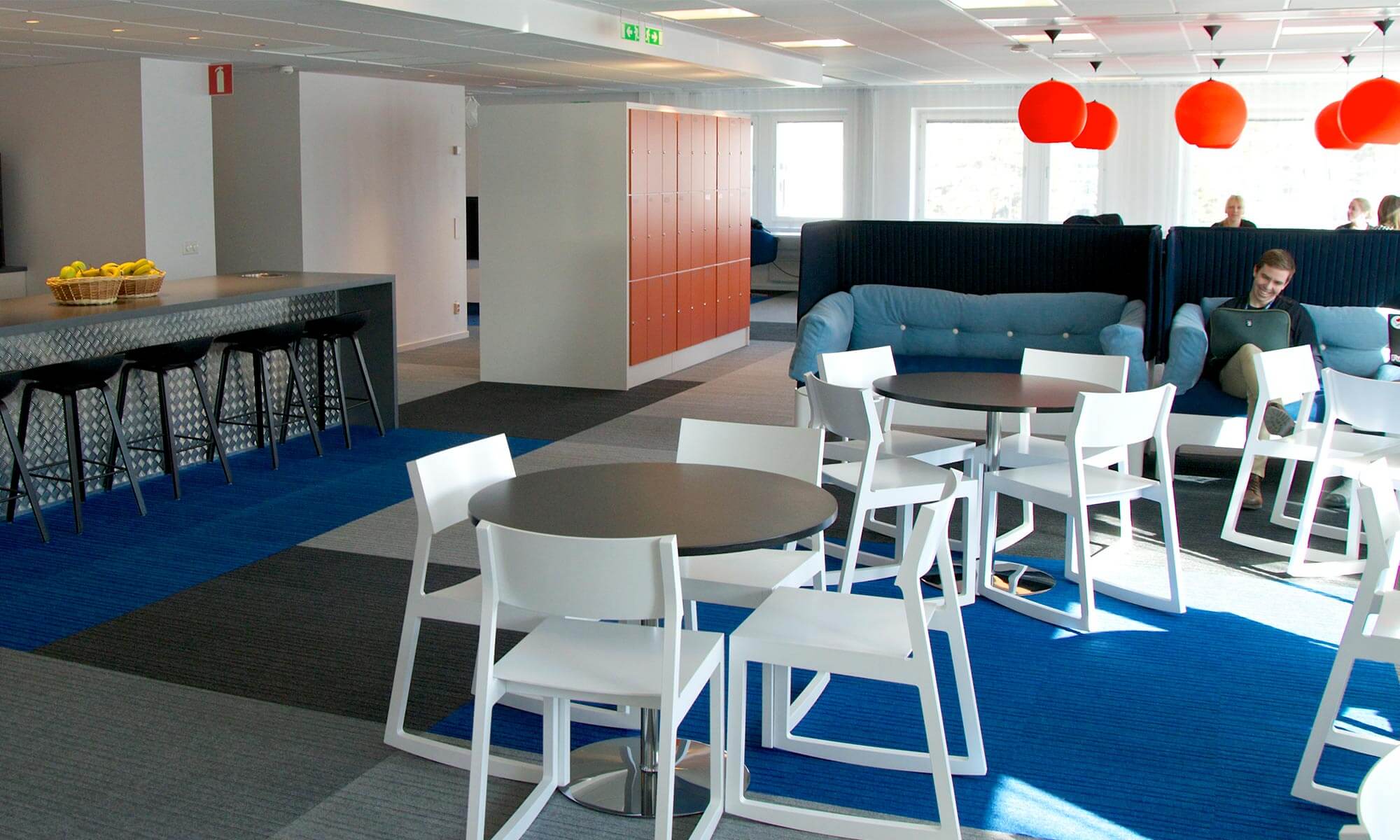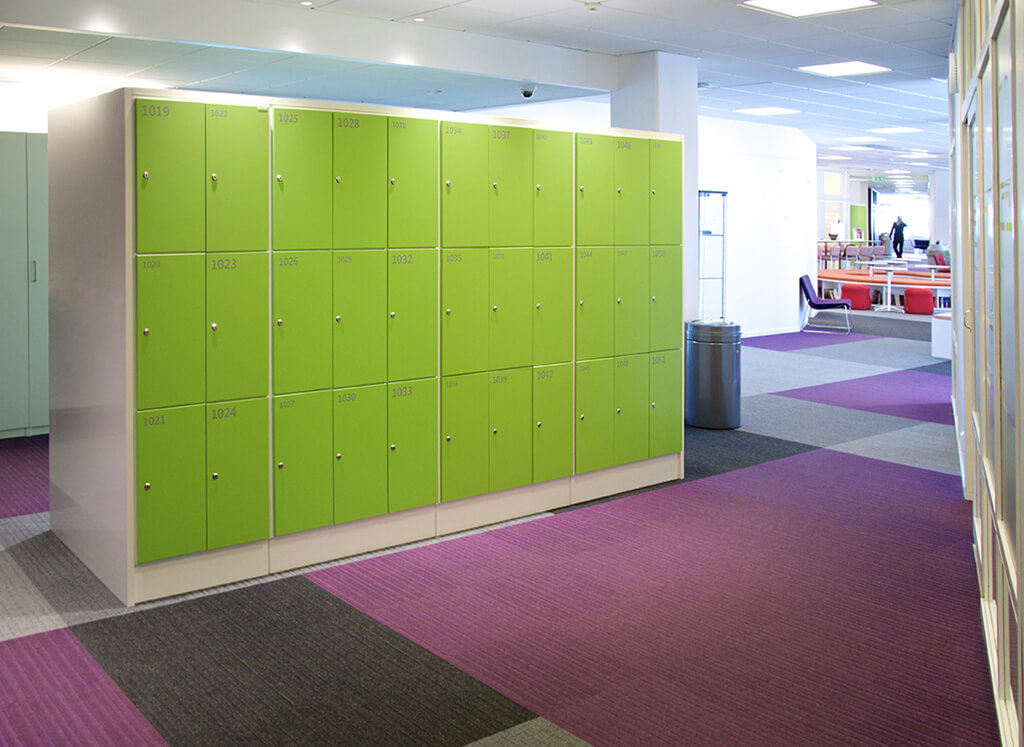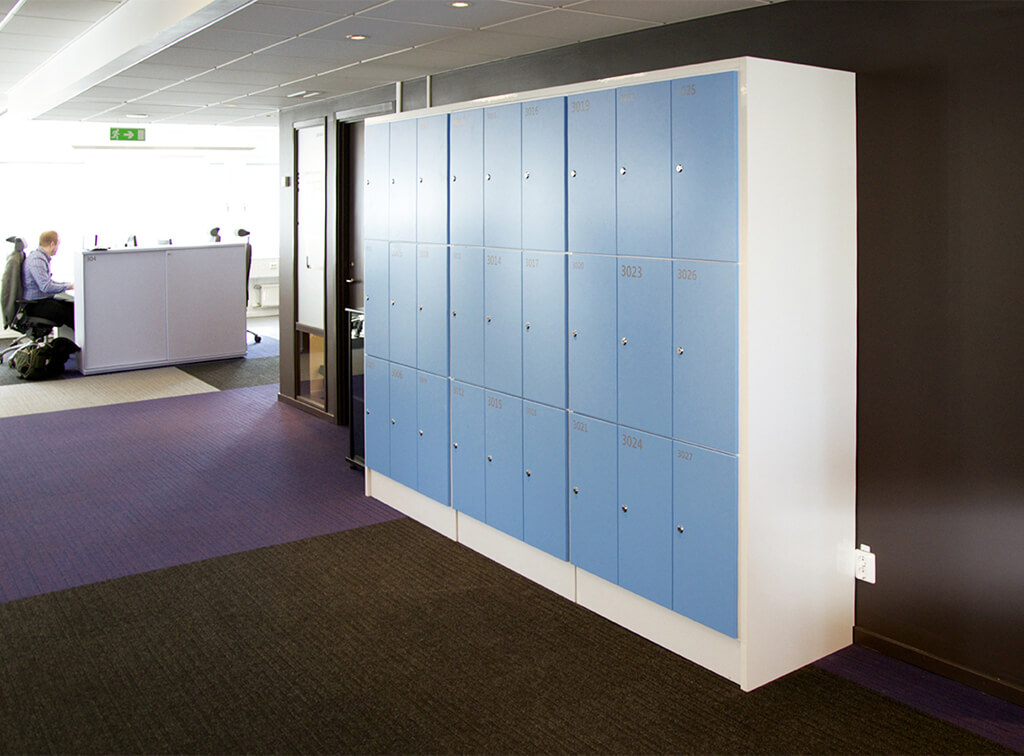Reference project: Microsoft
Personal storage to 600 employees
A year and a half ago, work began to develop Microsoft’s new office in Kista, Stockholm. With Microsoft’s own office in Amsterdam as a model, Microsoft chose to take the plunge and invest in an activity -based approach. TreCe was privileged to deliver personal storage to over 600 employees.
When Microsoft began work on rebuilding its Stockholm office there was a wish of being able to reuse parts of the existing interior. As TreCe had previously supplied Microsoft with furniture, only a few changes were made to reuse the existing interior. The storage compartments were supplemented with new doors in bright colors and screen printed numbers in various sizes. The compartments were moved out from the wall and built together, back to back, with the help of a cover panel in a white high gloss laminate. Thus valuable wall space was liberated and storage from two directions was made possible.
Microsoft storage compartments is part of the building and is divided into different areas depending on the application and requirements on the concentration level. The ground floor is the customer area. There, the different rooms have names like Business District, Market Square and Main street. Floor two is called the Culture House, three park, four Central station, five port and the top floor, the airport.
Each floor is built on the same principle with “Touch -down” areas, communication and meetings in the middle and various work spaces in each wing. The new office has, besides efficient resource utilization, resulted in strengthening the brand and has made the employees even more proud of their workplace.
Det nya kontoret har, förutom effektivare resursutnyttjande, resulterat i att varumärket stärkts och att de anställda blivit ännu stoltare över sin arbetsplats.
Heléne Lidström, one of the project leaders during the development of the new office emphasizes that Microsoft always strive to create sustainable offices.
The model for the office in Kista has been Microsoft’s office in Amsterdam, a pioneer project in activity-based approach. Heléne Lidström emphasizes the need to adopt a holistic method to an activity-based approach is essential to make it work. Both the location, in the office, technology and people must be included in the development process. Without a well-functioning method of working where technology enables communication and reconciliation, the concept will never work. The new organization also enables more efficient utilization of resources which supports a sustainable development. Because each workplace is flexible and no employee is bound to a particular desk, staff can easily change work environments and parts of the building can shut down, such as during vacations.
Den nya organisationen möjliggör även effektivare resursutnyttjande vilket främjar en hållbar utveckling. Eftersom varje arbetsplats är flexibel och ingen anställd bunden till ett visst skrivbord, kan personalen lätt flyttas om och delar av byggnaden stängas ned, exempelvis i semestertider.

